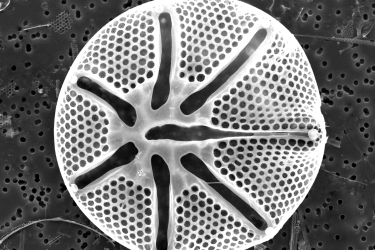One of the first things I texted my family my first full day at sea read as follows: The boat is over water three thousand feet deep right now! This is so cool!
If it’s not already obvious, there’s a part of me that’s a little wonderstruck to be out here. As an intern and a person, I am drawn to opportunities that let me play the role of the discoverer and get me up close and personal with the weird and under-appreciated organisms of our oceans. Pacific hake, the groundfish my entire project for the Hollings program is built around, definitely qualifies. It’s a member of the cod family, slender with big eyes and a paunchy underbelly. And while I don’t think it’s topping anyone’s favorite fish list (not even mine - that goes to the Mola mola, which with any luck I’ll see from the boat), working with the species this summer has helped me to understand its massive economic and ecological importance up and down the west coast. My project focuses on understanding how hake move up and down the west coast throughout the summer, which could help improve biomass estimates for management of the species and its fishery.
Even more thrilling, though, is seeing all the other creatures we pull up with the trawl net. I have a soft spot for the myctophids, or lanternfish, even though they don’t fare well against the massive pressure change from 250+ m (850 feet) below to above the surface. And I spent at least two minutes just staring into the half-dollar-sized eyes of a king-of-the-salmon. Most mysterious so far was the inclusion of two 15’ long squid tentacles with no body in sight. This bycatch is a great reminder that even out in the open ocean there is so much life to catalog and learn about.
The days are long, and I have plenty to keep me busy as I prepare to present my own research project, but getting to see everything in action - from my mentors making the calls to fish, to marine mammal watch, to helping sort out hake, salps, and all other sorts of mesopelagic creatures from the trawls - makes me feel like I’m having the early career of a lifetime.
About the author - Maddie Reifsteck is a class of 2022 Hollings Scholar interning with the Fisheries Resource Analysis and Monitoring Division at the Northwest Fisheries Science Center. She is currently attending Eckerd College in St. Petersburg, Florida as a marine science and creative writing double major and will graduate May 2024.




